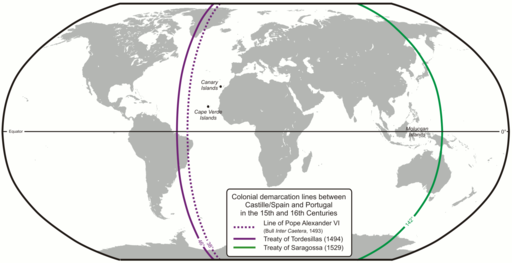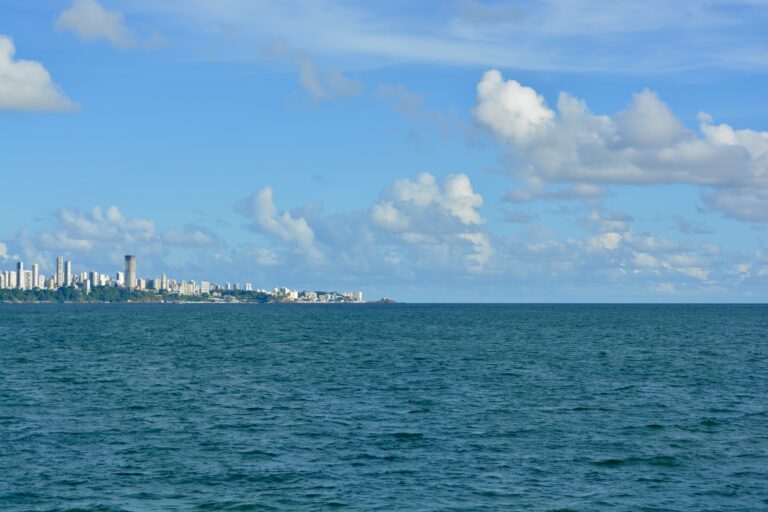The Contract of Zaragoza, also known as the Treaty of Saragossa, was a pivotal document signed in 1529 that shaped global exploration and colonial power dynamics, especially between two of the period’s most powerful seafaring nations: Spain and Portugal.
At the heart of this treaty lay the coveted Spice Islands, today’s Maluku Islands in Indonesia, rich with cloves, nutmeg, and mace. These precious spices, worth their weight in gold in European markets, ignited the flame of competition between Spain and Portugal, each claiming the Spice Islands as their own under previous treaties and exploratory rights.
The treaty was born out of the need to revise and clarify the spheres of influence and navigation set by the Treaty of Tordesillas of 1494, which had split the globe along a meridian 370 leagues west of Cape Verde Islands. However, the vagueness of the Treaty of Tordesillas created confusion, especially in the Spice Islands’ location—whether they lay within the Spanish or Portuguese hemisphere.
The Contract of Zaragoza involved complex negotiations, attended by cosmographers, pilots, and navigators from both Spain and Portugal. These experts consulted maps, pilots’ notes, and maritime logs, including the accounts of the Magellan-Elcano expedition, the first voyage to circumnavigate the globe, carried out by Spain between 1519 and 1522. Ferdinand Magellan, a Portuguese explorer in Spanish service, had claimed the Spice Islands for Spain during this expedition.
After protracted negotiations, the two powers agreed upon a new antimeridian, or line of demarcation, set at 297.5 leagues or 17° east of the Maluku Islands, favoring Portugal. This demarcation effectively granted Portugal exclusive access to the lucrative Spice Islands.
Under the treaty’s terms, Portugal paid Spain 350,000 ducats (about 100 kg of gold), a substantial sum in the 16th century. In exchange, Spain renounced all its claims to the Spice Islands. Interestingly, the agreement stated that if Spain ever found lands not discovered by Portugal but located within Portugal’s sphere, they were obliged to surrender them.
However, the Treaty of Saragossa, like its predecessor, faced the issue of accurate measurement. It was difficult to pinpoint the exact demarcation line due to the limited understanding of the Earth’s true size and the inaccuracy of navigation technology at the time. As a result, the agreement’s effectiveness and application to other potential colonial encounters remained problematic.
The Treaty of Saragossa is often overlooked compared to the more famous Treaty of Tordesillas. However, the agreement made in Zaragoza marked a crucial point in the Age of Discovery, underlining the international rivalry, the hunger for wealth, and the geopolitical strategy that drove European global exploration.
The two treaties represented an attempt to establish a ‘global’ law, a precursor to international law, to prevent conflict between Spain and Portugal. Yet, they also exemplified the Eurocentric world view of the era, ignoring the rights and sovereignty of indigenous populations in the ‘divided’ lands.
In retrospect, the Treaty of Saragossa signified an extraordinary period of history marked by global exploration, early colonialism, and international diplomacy. While the treaty, like the era itself, was fraught with ambiguities and challenges, it nevertheless served as a benchmark in the history of global engagement.
In many ways, the Contract of Zaragoza underscores the enduring and complex relationship between power, wealth, and knowledge. The explorations and conflicts of the 16th century, as well as their resolutions, paved the way for the world we live in today, where nations continue to negotiate shared interests and compete for resources.
Thus, as we reflect on the history of treaties like the
Contract of Zaragoza, we’re prompted to consider the echoes of these centuries-old agreements in today’s global landscape.
The period’s spirit of exploration that propelled these nations forward, sparking conflict and cooperation, continues to reverberate in the contemporary world. Today, though we are not carving up new lands or embarking on perilous sea voyages, nations continue to push into new frontiers, be it in technology, science, or space. The same dynamics of power and negotiation are in play, reminding us that while contexts change, many fundamental aspects of human nature and societal interaction remain the same.
Moreover, the Contract of Zaragoza serves as a reminder of the enormous impact small islands or regions can have on global dynamics due to their resources. In the 16th century, it was the Spice Islands; today, it might be rare earth minerals or oil reserves. Understanding the historical dynamics can offer critical insights into contemporary resource conflicts and geopolitics.
Another critical lesson from the Treaty of Saragossa is the necessity of clear, fair, and enforceable agreements in international relations. The ambiguities and limitations of the Treaty of Tordesillas led to the need for the Treaty of Saragossa, highlighting the importance of precision and mutual understanding in international agreements.
The Treaty of Saragossa, despite its age, holds pertinent lessons for today’s world. From the geopolitical maneuverings of global powers to the scramble for resources, the themes resonating from this historical event provide us with a mirror to view our contemporary challenges. It stands as a testament to human ambition and the lengths nations will go to secure wealth and power, while also serving as a cautionary tale about the potential pitfalls of ambiguous international agreements.
As we look forward to a future that might well involve the negotiation of resources beyond our planet, it may serve us well to remember the Contract of Zaragoza: a bold, flawed, and ambitious attempt to bring order to the chaos of discovery and ambition. The treaty, drawn up nearly five centuries ago, still has the capacity to inform, guide, and inspire us as we chart our course through the equally uncharted waters of the 21st century and beyond.











